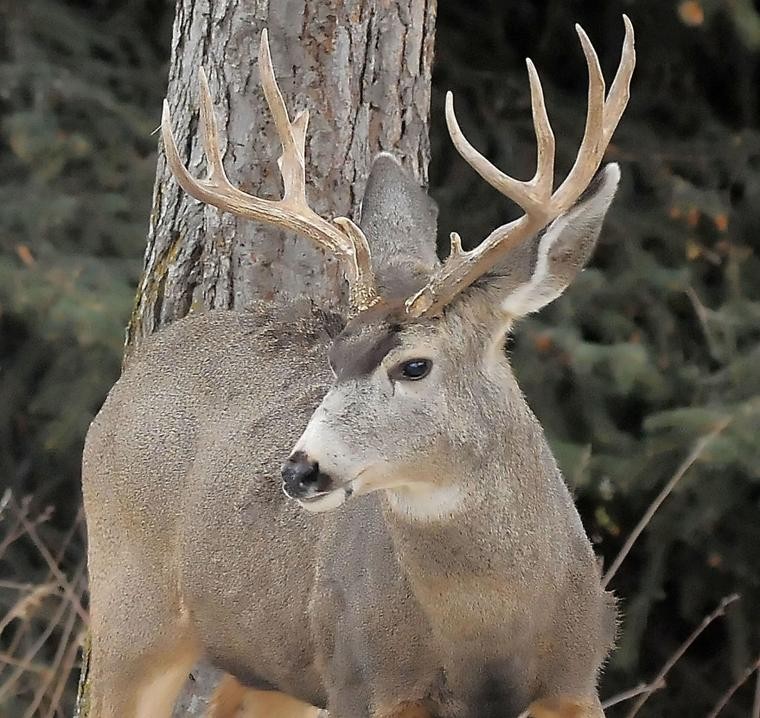Are mule deer numbers declining in Southeast Idaho?
The question is being asked by many hunters in the region. The answer isn’t as simple as some believe and is hard to completely understand without a lot of research, listening to people who are involved in the research or hopefully both.
First of all, in two of the areas where I normally hunt mule deer, it seemed like we saw fewer does and practically no bucks, even when scouting those areas last spring, summer and again a month before hunting season opened. However, a small group of hunters claiming to see fewer deer may reflect more on that group’s scouting and hunting skills rather than being a factual statement of mule deer numbers.
If you read Idaho Fish and Game’s website, it says that, “Mule deer are widespread in the central mountains and southern deserts of Idaho, while white-tailed deer dominate the northern forested areas of Idaho.” That is a pretty broad statement about the state as a whole, but doesn’t really address the issue of declining mule deer numbers, if in fact they are declining.
A better statement from Fish and Game is “Winter is the major regulator of deer populations.” Fish and Game goes on to say that even in a mild winter, if the deer survive, a drought after winter means less forage available. That means they may be less fit to survive the next winter.
Although this past winter has been a mild one and more fawns are expected to survive, we have had some harsh winters where fawn survival was around 25 percent, which could be a possible reason we didn’t see as many deer while hunting in 2017.
The winter of 2016 was devastating for fawns. Only 30 percent of mule deer fawns survived. The bucks would have been two points during the 2018 hunting season. Although 2016 fawn survival was well below average, Fish and Game insists that it was not catastrophic to the overall mule deer population. However, yearling bucks (2 points) typically account for a decent number of the mule deer buck harvest.
Fish and Game also points out that prior to 2017, mule deer populations were trending upward for several years, and the chances of a healthy population of mule deer during the 2018 hunting season looks good.
I appreciate the positive outlook that Fish and Game tries to present, but fawn mortality rates during winter months and less forage during droughts aren’t the only issues facing mule deer.
Unfortunately, quaking aspen forests are decreasing in the state of Idaho and the southeastern portion of the state is no exception. Traditionally, quaking aspen provide high-quality forage for mule deer, as well as hiding deer and providing a thermal cover. Aspen communities provide critical summer habitat for mule deer because they provide a rich diversity of grasses, forbs and shrubs that provide cover and needed nutrition for the winter months to come. The quality of aspen forests is as important an indicator of mule deer survival in mild or harsh winter conditions.
Idaho’s Mule Deer Initiative has identified aspen as a keystone species and an indicator of ecological integrity and biodiversity. Aspen play an important role in mule deer ecology from gestation through adulthood. Summer range may play an even more important role in mule deer populations than winter forage. The loss of aspen communities with the protective cover they provide for mule deer may also make them more vulnerable to predators.
Many years of successful fire suppression have resulted in a decline of aspen forests and an increase in coniferous forests. Because aspen forests are second in plant diversity only to riparian areas, the Mule Deer Initiative is actively working to increase aspen communities to benefit mule deer as well as other wildlife.
So the answer to the question at the beginning of this column is yes: We are seeing a decline in mule deer numbers as well as devastating and mild winters, drought conditions and declining Aspen forests. The good news is that we know what is causing the problems and Fish and Game, along with hunters, fishermen and other outdoor enthusiasts, are working hard to restore the aspen communities, do research on Idaho’s wildlife and solve other habitat issues.
Smokey Merkley was raised in Idaho and has been hunting since he was 10 years old. He was a member of the faculty of Texas A&M University for 25 years. There he taught orienteering, marksmanship, self-defense, fencing, scuba diving and boxing. He was among the first DPS-certified Texas Concealed Handgun Instructors. He can be contacted at mokeydo41245@hotmail.com.



